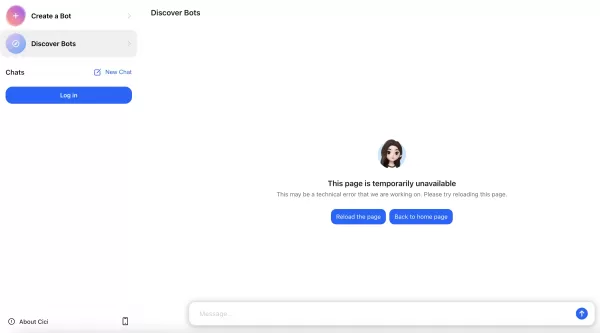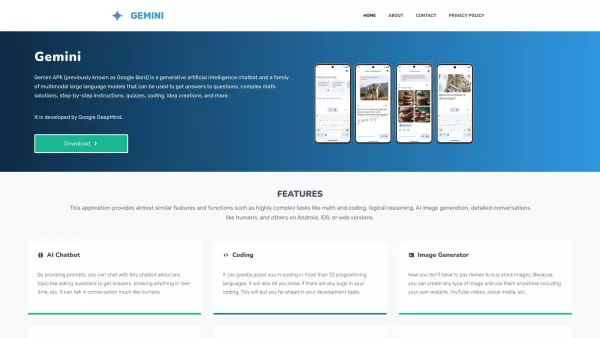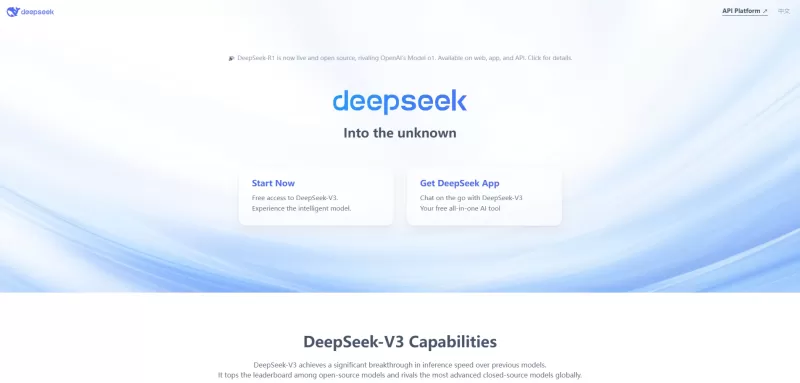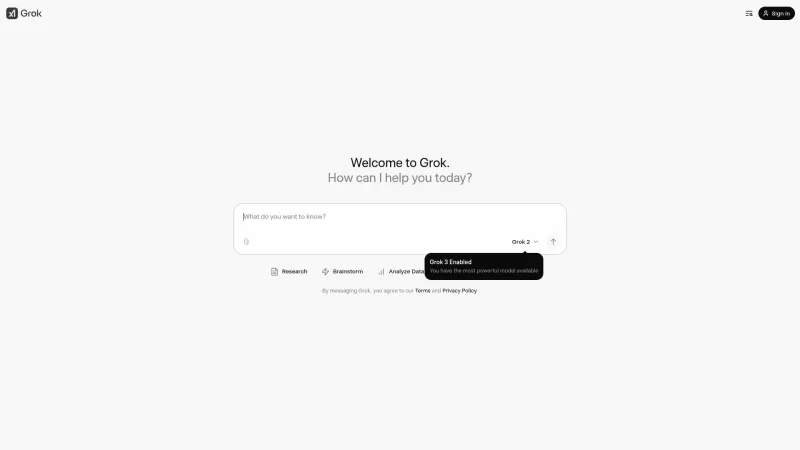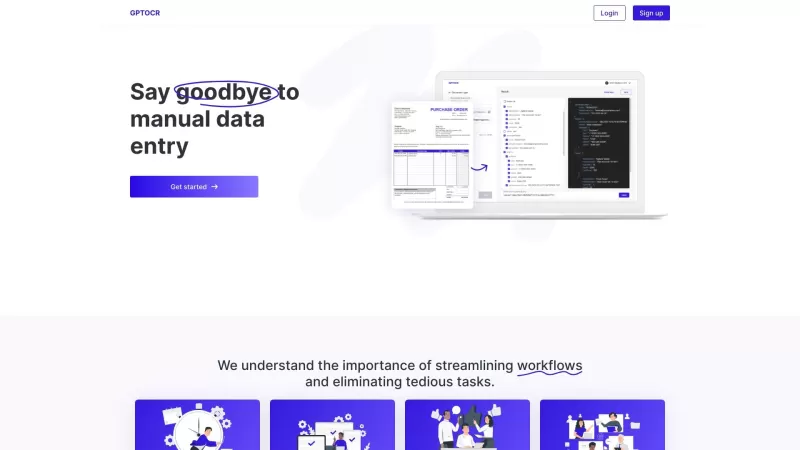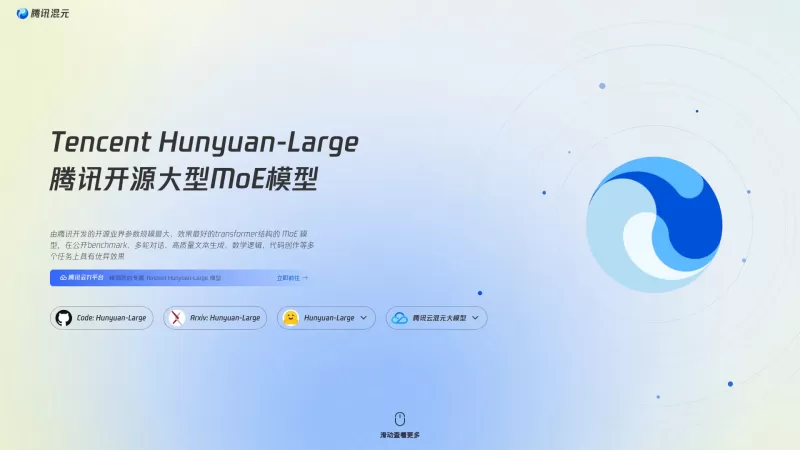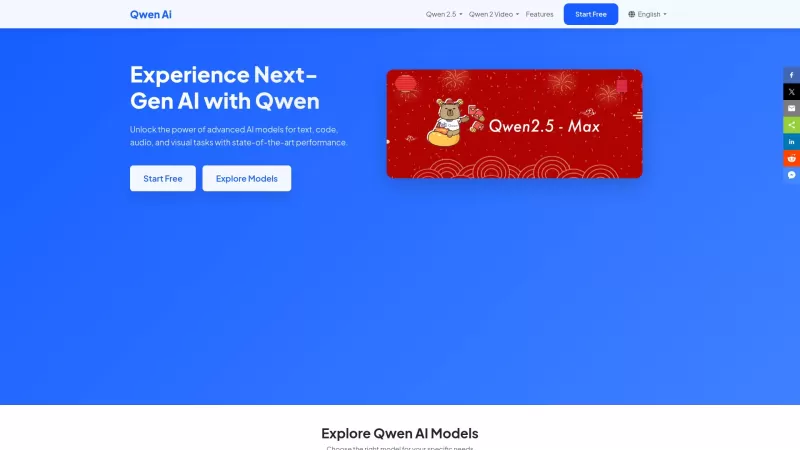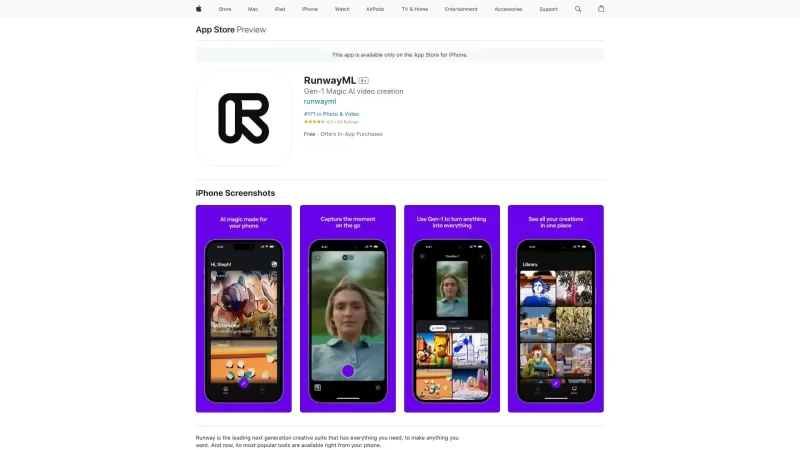AI-Driven Visual Effects: Revolutionizing Filmmaking in 2025
Explore the dynamic role of artificial intelligence (AI) in reshaping filmmaking. This article delves into AI's impact on visual effects, storyboarding, and content creation, addressing concerns while showcasing opportunities for filmmakers. Learn how adopting AI tools can boost efficiency, ignite creativity, and transform the filmmaking process in 2025.
Key Points
AI is transforming filmmaking and visual effects.
AI tools streamline content creation and enhance efficiency.
Adopting AI complements, rather than replaces, human creativity.
AI enables storyboarding without requiring drawing expertise.
New AI tools emerge frequently, making it essential to stay informed.
Maintain a clear creative vision and use AI to amplify it.
Human storytelling remains vital for impactful filmmaking.
Innovations like DragGAN and Segment Anything are revolutionizing VFX.
The Rise of AI in Filmmaking
AI: A Tool for Creative Empowerment
Artificial intelligence (AI) is reshaping the filmmaking landscape, sparking both excitement and apprehension. While some fear job displacement, many filmmakers see AI as a valuable tool to enhance their craft. Addressing concerns about reduced opportunities is crucial, but AI's potential to streamline workflows is undeniable.
AI serves as a next-generation toolset, boosting efficiency and accelerating production.
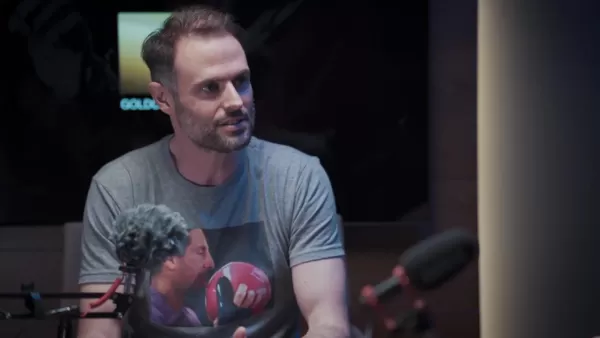
By integrating AI, filmmakers can dedicate more time to creative exploration and the artistry of storytelling.
Storytelling remains the heart of filmmaking. AI enhances how messages are delivered, but the human touch is irreplaceable in crafting compelling narratives. As filmmaker Andrew Miller noted, "We will always be moved by humans behind the curtain." This highlights the enduring value of human creativity, even as technology advances.
Thus, filmmakers should embrace AI as a creative ally, leveraging it to focus on storytelling, character depth, and audience connection while using AI to handle technical tasks.
Why Adopt AI for Filmmaking and Visual Effects?
AI integration in filmmaking delivers significant benefits for visual effects (VFX) and content creation. It enhances speed, efficiency, and creative freedom, positioning AI as an augmentation of existing skills rather than a replacement.
Key advantages include:
- Faster Production: AI automates repetitive tasks, shortening production timelines.
- Enhanced Efficiency: AI optimizes workflows, reducing costs and resource demands.
- Creative Liberation: AI handles technical processes, allowing artists to focus on storytelling.
In today’s fast-evolving content landscape, AI provides a competitive advantage, enabling filmmakers to produce high-quality content swiftly. It supports more projects, pushes creative boundaries, and ensures relevance in a dynamic industry. As advanced tools continue to emerge, AI is becoming indispensable in modern filmmaking.
Emerging AI Tools Redefining Visual Effects
DragGAN: Precision Image Manipulation
DragGAN, a cutting-edge tool, enables interactive, point-based image manipulation, offering precise control over shapes, poses, expressions, and layouts.
This tool transforms visual effects workflows. It simplifies complex adjustments, such as reshaping landscapes or tweaking character poses, through intuitive drag-and-drop actions.
DragGAN delivers unmatched precision, making image editing faster and more accessible.
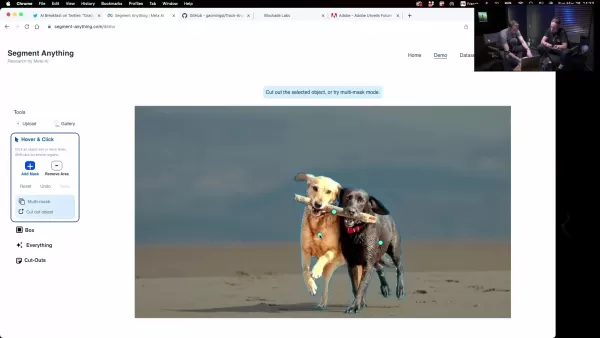
Traditional VFX methods require time-intensive masking and layering. DragGAN streamlines these tasks, enabling artists to achieve stunning results quickly, revolutionizing how AI manipulates visual elements.
Segment Anything: Effortless Object Isolation
Segment Anything, developed by Meta AI, redefines object isolation by enabling single-click extraction of objects from images with exceptional accuracy, eliminating the need for manual tracing.
This breakthrough benefits VFX artists by:
- Accelerating Compositing: Isolates elements swiftly for seamless integration.
- Simplifying Masking: Generates precise masks with minimal effort.
- Enhancing Flexibility: Allows easy manipulation of individual scene elements.
Segment Anything boosts efficiency, reducing time spent on object isolation and enabling users of all skill levels to achieve professional results.
Track Anything: Advanced Video Object Tracking
- Supports visualization and annotation for video object tracking and segmentation.
- Enables object-centric video tasks like inpainting and editing.
Its potential to automate rotoscoping across entire video sequences marks a significant advancement for VFX workflows.
Step-by-Step Guide: Using DragGAN for Image Pose and Shape Adjustments
Select Source and Destination Points
Activate the Drag feature and pinpoint anchor points, such as eye corners or jawlines, then specify where these points should move.
Execute Drag Operation
Apply the transformation to adjust the target features in the output.
Fine-Tune Results
Use masking to target specific areas and adjust the radius to control the scope of changes. Monitor results in real-time to achieve precise modifications.
Segment Anything: Pricing (Optional)
Segment Anything Remains Free
This open-source tool is free for all users, including commercial applications, with ongoing improvements ensuring accessibility.
DragGAN: Advantages and Challenges
Pros
Precision Control: Enables direct manipulation of image shapes and poses.
Creative Flexibility: Encourages exploration of diverse visual styles.
Time Efficiency: Simplifies complex edits into intuitive actions.
Cons
Learning Curve: Requires time to master the interface and settings.
Limited Scope: Best suited for point-based edits, may require supplementary tools.
Ethical Use: Must be used responsibly to prevent misinformation.
Track Anything: Key Features
Versatility of Track Anything
Track Anything offers flexible video object tracking and segmentation, allowing users to define targets with simple clicks.
Track Anything Updates
Online tutorials are available, with enhancements like improved inpainting, reduced GPU memory usage, and integration with Caption Anything for visual captioning.
Frequently Asked Questions
Will AI Replace Human Filmmakers?
AI enhances efficiency and creativity but cannot replace the human touch essential for storytelling and emotional resonance.
What Are AI’s Key Benefits in Filmmaking?
AI accelerates production, streamlines workflows, and frees up time for creative exploration, enabling filmmakers to focus on storytelling.
Related Questions
How Can AI Assist with Storyboarding?
AI tools generate visuals from text descriptions, enabling filmmakers to create storyboards without drawing skills, speeding up pre-production and scene visualization.
What Ethical Considerations Apply to AI in Filmmaking?
Filmmakers must use AI responsibly to avoid misinformation, ensuring content authenticity and avoiding harmful stereotypes through careful evaluation and ethical decision-making.
Related article
 Google Introduces Real-Time AI Camera Sharing in Search
Google Expands AI-Powered "Live" Search Capabilities Across PlatformsAt today's I/O developer conference, Google unveiled expanded access to its innovative "Live" mode feature, enabling users to explore their surroundings through AI-powered visual se
Google Introduces Real-Time AI Camera Sharing in Search
Google Expands AI-Powered "Live" Search Capabilities Across PlatformsAt today's I/O developer conference, Google unveiled expanded access to its innovative "Live" mode feature, enabling users to explore their surroundings through AI-powered visual se
 Dell Launches Nvidia Blackwell-Powered AI Acceleration Platform
Dell Unveils Next-Gen AI Servers with Blackwell GPUs at Vegas EventAt Dell Technologies World in Las Vegas, the company unveiled its latest AI server lineup featuring Nvidia's cutting-edge Blackwell Ultra GPUs, marking a significant leap in enterpris
Dell Launches Nvidia Blackwell-Powered AI Acceleration Platform
Dell Unveils Next-Gen AI Servers with Blackwell GPUs at Vegas EventAt Dell Technologies World in Las Vegas, the company unveiled its latest AI server lineup featuring Nvidia's cutting-edge Blackwell Ultra GPUs, marking a significant leap in enterpris
 Cognition Acquires Windsurf, Maker of AI Coding Agent Devin
Cognition Acquires AI Coding Startup Windsurf Amid Industry Frenzy
Cognition, the AI startup responsible for the revolutionary coding assistant Devin, revealed plans to acquire Windsurf through a blog announcement on Monday. This strategic move come
Comments (0)
0/200
Cognition Acquires Windsurf, Maker of AI Coding Agent Devin
Cognition Acquires AI Coding Startup Windsurf Amid Industry Frenzy
Cognition, the AI startup responsible for the revolutionary coding assistant Devin, revealed plans to acquire Windsurf through a blog announcement on Monday. This strategic move come
Comments (0)
0/200
Explore the dynamic role of artificial intelligence (AI) in reshaping filmmaking. This article delves into AI's impact on visual effects, storyboarding, and content creation, addressing concerns while showcasing opportunities for filmmakers. Learn how adopting AI tools can boost efficiency, ignite creativity, and transform the filmmaking process in 2025.
Key Points
AI is transforming filmmaking and visual effects.
AI tools streamline content creation and enhance efficiency.
Adopting AI complements, rather than replaces, human creativity.
AI enables storyboarding without requiring drawing expertise.
New AI tools emerge frequently, making it essential to stay informed.
Maintain a clear creative vision and use AI to amplify it.
Human storytelling remains vital for impactful filmmaking.
Innovations like DragGAN and Segment Anything are revolutionizing VFX.
The Rise of AI in Filmmaking
AI: A Tool for Creative Empowerment
Artificial intelligence (AI) is reshaping the filmmaking landscape, sparking both excitement and apprehension. While some fear job displacement, many filmmakers see AI as a valuable tool to enhance their craft. Addressing concerns about reduced opportunities is crucial, but AI's potential to streamline workflows is undeniable.
AI serves as a next-generation toolset, boosting efficiency and accelerating production.

By integrating AI, filmmakers can dedicate more time to creative exploration and the artistry of storytelling.
Storytelling remains the heart of filmmaking. AI enhances how messages are delivered, but the human touch is irreplaceable in crafting compelling narratives. As filmmaker Andrew Miller noted, "We will always be moved by humans behind the curtain." This highlights the enduring value of human creativity, even as technology advances.
Thus, filmmakers should embrace AI as a creative ally, leveraging it to focus on storytelling, character depth, and audience connection while using AI to handle technical tasks.
Why Adopt AI for Filmmaking and Visual Effects?
AI integration in filmmaking delivers significant benefits for visual effects (VFX) and content creation. It enhances speed, efficiency, and creative freedom, positioning AI as an augmentation of existing skills rather than a replacement.
Key advantages include:
- Faster Production: AI automates repetitive tasks, shortening production timelines.
- Enhanced Efficiency: AI optimizes workflows, reducing costs and resource demands.
- Creative Liberation: AI handles technical processes, allowing artists to focus on storytelling.
In today’s fast-evolving content landscape, AI provides a competitive advantage, enabling filmmakers to produce high-quality content swiftly. It supports more projects, pushes creative boundaries, and ensures relevance in a dynamic industry. As advanced tools continue to emerge, AI is becoming indispensable in modern filmmaking.
Emerging AI Tools Redefining Visual Effects
DragGAN: Precision Image Manipulation
DragGAN, a cutting-edge tool, enables interactive, point-based image manipulation, offering precise control over shapes, poses, expressions, and layouts.
This tool transforms visual effects workflows. It simplifies complex adjustments, such as reshaping landscapes or tweaking character poses, through intuitive drag-and-drop actions.
DragGAN delivers unmatched precision, making image editing faster and more accessible.

Traditional VFX methods require time-intensive masking and layering. DragGAN streamlines these tasks, enabling artists to achieve stunning results quickly, revolutionizing how AI manipulates visual elements.
Segment Anything: Effortless Object Isolation
Segment Anything, developed by Meta AI, redefines object isolation by enabling single-click extraction of objects from images with exceptional accuracy, eliminating the need for manual tracing.
This breakthrough benefits VFX artists by:
- Accelerating Compositing: Isolates elements swiftly for seamless integration.
- Simplifying Masking: Generates precise masks with minimal effort.
- Enhancing Flexibility: Allows easy manipulation of individual scene elements.
Segment Anything boosts efficiency, reducing time spent on object isolation and enabling users of all skill levels to achieve professional results.
Track Anything: Advanced Video Object Tracking
- Supports visualization and annotation for video object tracking and segmentation.
- Enables object-centric video tasks like inpainting and editing.
Its potential to automate rotoscoping across entire video sequences marks a significant advancement for VFX workflows.
Step-by-Step Guide: Using DragGAN for Image Pose and Shape Adjustments
Select Source and Destination Points
Activate the Drag feature and pinpoint anchor points, such as eye corners or jawlines, then specify where these points should move.
Execute Drag Operation
Apply the transformation to adjust the target features in the output.
Fine-Tune Results
Use masking to target specific areas and adjust the radius to control the scope of changes. Monitor results in real-time to achieve precise modifications.
Segment Anything: Pricing (Optional)
Segment Anything Remains Free
This open-source tool is free for all users, including commercial applications, with ongoing improvements ensuring accessibility.
DragGAN: Advantages and Challenges
Pros
Precision Control: Enables direct manipulation of image shapes and poses.
Creative Flexibility: Encourages exploration of diverse visual styles.
Time Efficiency: Simplifies complex edits into intuitive actions.
Cons
Learning Curve: Requires time to master the interface and settings.
Limited Scope: Best suited for point-based edits, may require supplementary tools.
Ethical Use: Must be used responsibly to prevent misinformation.
Track Anything: Key Features
Versatility of Track Anything
Track Anything offers flexible video object tracking and segmentation, allowing users to define targets with simple clicks.
Track Anything Updates
Online tutorials are available, with enhancements like improved inpainting, reduced GPU memory usage, and integration with Caption Anything for visual captioning.
Frequently Asked Questions
Will AI Replace Human Filmmakers?
AI enhances efficiency and creativity but cannot replace the human touch essential for storytelling and emotional resonance.
What Are AI’s Key Benefits in Filmmaking?
AI accelerates production, streamlines workflows, and frees up time for creative exploration, enabling filmmakers to focus on storytelling.
Related Questions
How Can AI Assist with Storyboarding?
AI tools generate visuals from text descriptions, enabling filmmakers to create storyboards without drawing skills, speeding up pre-production and scene visualization.
What Ethical Considerations Apply to AI in Filmmaking?
Filmmakers must use AI responsibly to avoid misinformation, ensuring content authenticity and avoiding harmful stereotypes through careful evaluation and ethical decision-making.
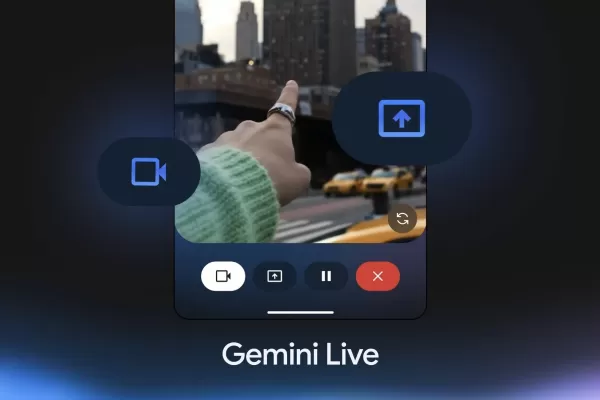 Google Introduces Real-Time AI Camera Sharing in Search
Google Expands AI-Powered "Live" Search Capabilities Across PlatformsAt today's I/O developer conference, Google unveiled expanded access to its innovative "Live" mode feature, enabling users to explore their surroundings through AI-powered visual se
Google Introduces Real-Time AI Camera Sharing in Search
Google Expands AI-Powered "Live" Search Capabilities Across PlatformsAt today's I/O developer conference, Google unveiled expanded access to its innovative "Live" mode feature, enabling users to explore their surroundings through AI-powered visual se
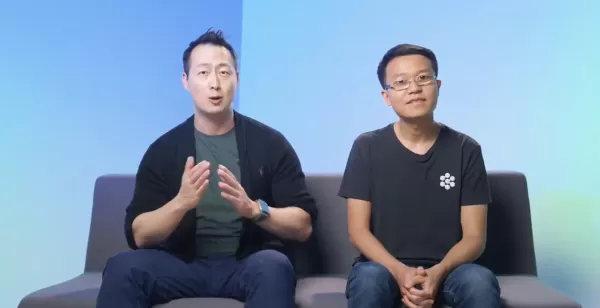 Cognition Acquires Windsurf, Maker of AI Coding Agent Devin
Cognition Acquires AI Coding Startup Windsurf Amid Industry Frenzy
Cognition, the AI startup responsible for the revolutionary coding assistant Devin, revealed plans to acquire Windsurf through a blog announcement on Monday. This strategic move come
Cognition Acquires Windsurf, Maker of AI Coding Agent Devin
Cognition Acquires AI Coding Startup Windsurf Amid Industry Frenzy
Cognition, the AI startup responsible for the revolutionary coding assistant Devin, revealed plans to acquire Windsurf through a blog announcement on Monday. This strategic move come

